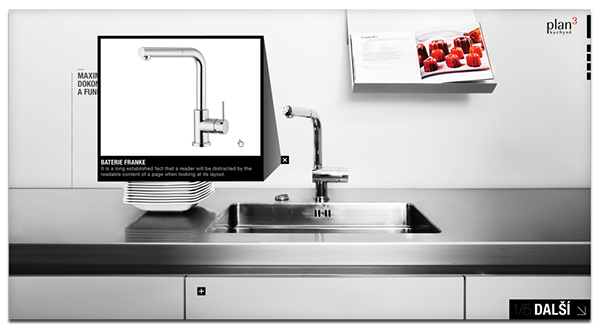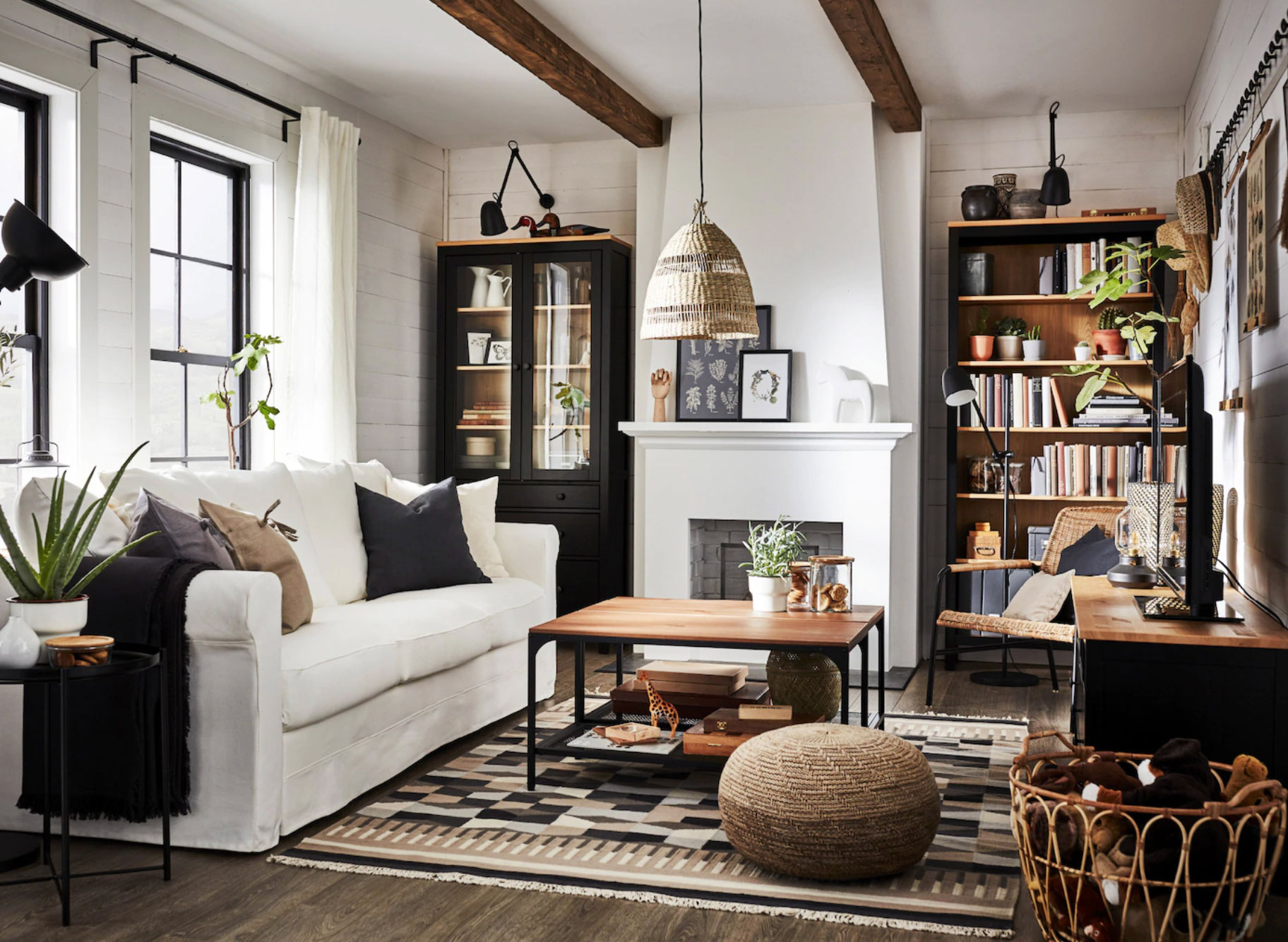When it comes to designing a functional and efficient kitchen, the work triangle is an important concept to keep in mind. This refers to the placement of the three main work areas in the kitchen: the sink, stove, and refrigerator. These three areas should form a triangle with no more than a few steps between them. This allows for easy movement and efficiency while cooking and preparing meals.1. Kitchen Design Rule #1: Work Triangle
Having adequate countertop space is crucial in any kitchen design. Countertops are where most of the food preparation takes place, so it is important to have enough space for chopping, mixing, and other tasks. Aim for at least 36 inches of continuous countertop space for optimal functionality.2. Kitchen Design Rule #2: Countertop Space
One of the biggest complaints in kitchens is not having enough storage space. To avoid this issue, make sure to incorporate plenty of storage solutions into your kitchen design. This can include cabinets, drawers, shelves, and even utilizing vertical space with tall cabinets or shelving units.3. Kitchen Design Rule #3: Storage Space
Proper lighting is key in any kitchen design. It not only helps with visibility while cooking and preparing meals, but it also sets the mood and ambiance of the space. It is important to have a combination of task lighting, such as under-cabinet lights, and ambient lighting, such as pendant lights or a chandelier, to create a well-lit and functional kitchen.4. Kitchen Design Rule #4: Lighting
Ventilation is often overlooked in kitchen design, but it is crucial for maintaining air quality and removing cooking odors. Make sure to have a good range hood or ventilation system in place to keep the air in your kitchen fresh and clean.5. Kitchen Design Rule #5: Ventilation
When planning out your kitchen design, it is important to consider the placement of your appliances. Make sure to leave enough space between the stove, refrigerator, and dishwasher for easy access and to avoid any potential safety hazards. Also, consider the flow of the work triangle when deciding where to place your appliances.6. Kitchen Design Rule #6: Appliance Placement
In addition to the work triangle, it is important to consider the overall traffic flow in your kitchen. Make sure there is enough room for multiple people to move around and work in the kitchen without getting in each other's way. This is especially important for larger kitchens or those that are open to other living spaces.7. Kitchen Design Rule #7: Traffic Flow
Safety should always be a top priority in any kitchen design. Make sure to choose materials that are durable and easy to clean, especially in high-traffic areas like the countertops and floors. Also, consider adding safety features such as rounded edges on countertops and childproof locks on cabinets and drawers.8. Kitchen Design Rule #8: Safety
The materials and finishes you choose for your kitchen design can have a big impact on the overall look and feel of the space. Consider the style of your home and your personal preferences when selecting materials for countertops, backsplash, cabinets, and flooring. It is also important to choose materials that are durable and easy to maintain.9. Kitchen Design Rule #9: Materials and Finishes
Last but not least, don't forget to add your personal touch to your kitchen design. Whether it's a unique backsplash, colorful accents, or a statement piece of furniture, incorporating elements that reflect your personal style will make your kitchen feel like a truly special and personalized space. In conclusion, by following these top 10 kitchen design rules, you can create a functional, efficient, and beautiful kitchen that meets all of your needs and preferences. Remember to keep the work triangle in mind, prioritize storage and lighting, and add your own personal touches to make your kitchen truly one-of-a-kind.10. Kitchen Design Rule #10: Personalization
Creating a Functional and Stylish Kitchen Design: Additional Rules to Consider

Rule #22: Incorporate Adequate Storage Space
 Storage space
is often an afterthought in kitchen design, but it is a vital element that can greatly improve the functionality of your space. Make sure to include
pantry storage
for dry goods,
cabinets
for dishes and cookware, and
drawers
for utensils and other smaller items. Utilize vertical space by adding
shelving
or
hanging racks
for pots and pans. Having ample storage will help keep your kitchen organized and clutter-free.
Storage space
is often an afterthought in kitchen design, but it is a vital element that can greatly improve the functionality of your space. Make sure to include
pantry storage
for dry goods,
cabinets
for dishes and cookware, and
drawers
for utensils and other smaller items. Utilize vertical space by adding
shelving
or
hanging racks
for pots and pans. Having ample storage will help keep your kitchen organized and clutter-free.
Rule #23: Don't Neglect Lighting
 Lighting is often overlooked, but it can make a big difference in the overall look and feel of your kitchen. Make sure to have
task lighting
above work areas, such as the
countertops
and
stove
, as well as
ambient lighting
for a warm and inviting atmosphere. Consider adding
under-cabinet lighting
to illuminate darker areas and make it easier to see while cooking.
Lighting is often overlooked, but it can make a big difference in the overall look and feel of your kitchen. Make sure to have
task lighting
above work areas, such as the
countertops
and
stove
, as well as
ambient lighting
for a warm and inviting atmosphere. Consider adding
under-cabinet lighting
to illuminate darker areas and make it easier to see while cooking.
Rule #24: Balance Functionality and Aesthetics
 While functionality is important, don't forget about the aesthetic appeal of your kitchen design. Choose
materials
and
colors
that not only serve their purpose but also complement each other to create a cohesive look. For example, if you have
stainless steel appliances
, consider incorporating
metallic accents
in the
hardware
or
light fixtures
for a sleek and modern feel.
While functionality is important, don't forget about the aesthetic appeal of your kitchen design. Choose
materials
and
colors
that not only serve their purpose but also complement each other to create a cohesive look. For example, if you have
stainless steel appliances
, consider incorporating
metallic accents
in the
hardware
or
light fixtures
for a sleek and modern feel.
Rule #25: Add Personal Touches
 Your kitchen should reflect your personal style and preferences. Consider adding
decorative elements
such as
plants
,
artwork
, or
colorful accessories
to inject some personality into the space. This will not only make your kitchen feel more inviting but also make it more unique and personalized.
Your kitchen should reflect your personal style and preferences. Consider adding
decorative elements
such as
plants
,
artwork
, or
colorful accessories
to inject some personality into the space. This will not only make your kitchen feel more inviting but also make it more unique and personalized.
Rule #26: Stay True to Your Budget
 It's easy to get carried away with kitchen design and overspend on fancy appliances or high-end finishes. However, it's important to set a budget and stick to it. Prioritize
essential elements
such as
quality appliances
and
durable materials
, and be mindful of where you can save money without sacrificing functionality or style.
It's easy to get carried away with kitchen design and overspend on fancy appliances or high-end finishes. However, it's important to set a budget and stick to it. Prioritize
essential elements
such as
quality appliances
and
durable materials
, and be mindful of where you can save money without sacrificing functionality or style.
Rule #27: Consider the Flow of the Space
 When designing your kitchen, think about how you will move around and use the space. The
work triangle
principle, which involves placing the
sink
,
stove
, and
refrigerator
in a triangular formation, is a good guideline to follow. This will ensure that your kitchen is efficient and easy to navigate while cooking.
When designing your kitchen, think about how you will move around and use the space. The
work triangle
principle, which involves placing the
sink
,
stove
, and
refrigerator
in a triangular formation, is a good guideline to follow. This will ensure that your kitchen is efficient and easy to navigate while cooking.
Rule #28: Don't Be Afraid to Get Creative
 While there are many rules and guidelines to follow in kitchen design, don't be afraid to break the rules and get creative. Think outside the box and incorporate unique elements that reflect your personal style and make your kitchen stand out. This can be anything from a bold
color scheme
to incorporating
unconventional materials
like reclaimed wood or concrete.
In conclusion, following these additional rules will help you create a functional and stylish kitchen design that not only meets your needs but also reflects your personal style. By incorporating adequate storage space, proper lighting, a balance of functionality and aesthetics, personal touches, and staying within your budget, you can create a kitchen that is both practical and visually appealing. Remember to also consider the flow of the space and don't be afraid to think outside the box and get creative. With these rules in mind, you can design the kitchen of your dreams.
While there are many rules and guidelines to follow in kitchen design, don't be afraid to break the rules and get creative. Think outside the box and incorporate unique elements that reflect your personal style and make your kitchen stand out. This can be anything from a bold
color scheme
to incorporating
unconventional materials
like reclaimed wood or concrete.
In conclusion, following these additional rules will help you create a functional and stylish kitchen design that not only meets your needs but also reflects your personal style. By incorporating adequate storage space, proper lighting, a balance of functionality and aesthetics, personal touches, and staying within your budget, you can create a kitchen that is both practical and visually appealing. Remember to also consider the flow of the space and don't be afraid to think outside the box and get creative. With these rules in mind, you can design the kitchen of your dreams.














































































/exciting-small-kitchen-ideas-1821197-hero-d00f516e2fbb4dcabb076ee9685e877a.jpg)









:max_bytes(150000):strip_icc()/exciting-small-kitchen-ideas-1821197-hero-d00f516e2fbb4dcabb076ee9685e877a.jpg)







:max_bytes(150000):strip_icc()/Modernkitchen-GettyImages-1124517056-c5fecb44794f4b47a685fc976c201296.jpg)








